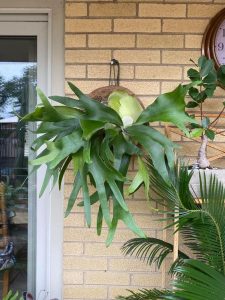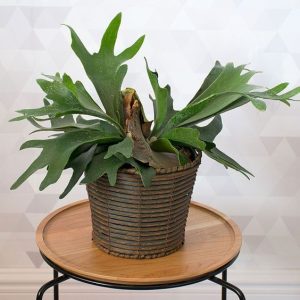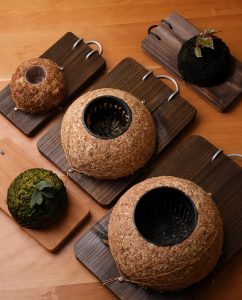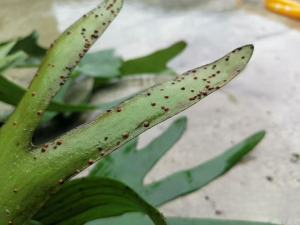- English
- Chinese
- French
- German
- Portuguese
- Spanish
- Russian
- Japanese
- Korean
- Arabic
- Irish
- Greek
- Turkish
- Italian
- Danish
- Romanian
- Indonesian
- Czech
- Afrikaans
- Swedish
- Polish
- Basque
- Catalan
- Esperanto
- Hindi
- Lao
- Albanian
- Amharic
- Armenian
- Azerbaijani
- Belarusian
- Bengali
- Bosnian
- Bulgarian
- Cebuano
- Chichewa
- Corsican
- Croatian
- Dutch
- Estonian
- Filipino
- Finnish
- Frisian
- Galician
- Georgian
- Gujarati
- Haitian
- Hausa
- Hawaiian
- Hebrew
- Hmong
- Hungarian
- Icelandic
- Igbo
- Javanese
- Kannada
- Kazakh
- Khmer
- Kurdish
- Kyrgyz
- Latin
- Latvian
- Lithuanian
- Luxembou..
- Macedonian
- Malagasy
- Malay
- Malayalam
- Maltese
- Maori
- Marathi
- Mongolian
- Burmese
- Nepali
- Norwegian
- Pashto
- Persian
- Punjabi
- Serbian
- Sesotho
- Sinhala
- Slovak
- Slovenian
- Somali
- Samoan
- Scots Gaelic
- Shona
- Sindhi
- Sundanese
- Swahili
- Tajik
- Tamil
- Telugu
- Thai
- Ukrainian
- Urdu
- Uzbek
- Vietnamese
- Welsh
- Xhosa
- Yiddish
- Yoruba
- Zulu
- Kinyarwanda
- Tatar
- Oriya
- Turkmen
- Uyghur

Caring for Staghorn Fern
Staghorn Fern: Delicate Epiphytic Duals of Green
Platycerium wallichii Hook., commonly known as the Staghorn Fern, is an epiphytic plant belonging to the family Platyceriaceae. The leaves of the Staghorn Fern are of two types: the vegetative leaves are smaller, round, oval, or fan-shaped, closely adhering to the substrate; the sporophylls resemble the antlers of a male deer, with a dense covering of soft hairs. When newly formed, they are light green, turning to light brown as they mature.

Staghorn Fern
As an epiphyte, it has a fleshy, short, and horizontally growing rhizome densely covered with scales. The scales are light brown or grayish-white, with a deep brown center, hard, linear, measuring about 10 mm long and 4 mm wide.
The leaves are arranged in two rows and exhibit two types; the basal sterile leaves (humus leaves) are persistent, thick and leathery, with the lower part fleshy, reaching up to 1 cm in thickness. The upper part is thin, erect, and sessile, adhering to tree trunks, growing up to 40 cm long, with length and width nearly equal. The leaf tips are truncate and irregular, with 3-5 forked divisions, and the lobes are nearly equal in length, rounded or pointed at the tips, with entire margins. The main veins are prominent on both sides, and the leaf veins are not very distinct. Both surfaces are sparsely covered with star-shaped hairs, initially green, but soon wither and turn brown.
The normal fertile fronds typically grow in pairs, drooping, and are gray-green in color, measuring 25-70 centimeters in length. They are divided into three unequally sized main lobes, with a wedge-shaped base that is extended downwards, almost sessile.
he inner lobe is the largest, forking multiple times into narrow segments. The middle lobe is smaller, and both are fertile, while the outer lobe is the smallest and infertile. The lobes have entire margins and are covered with grayish-white stellate hairs, with prominent and raised veins. The sori are scattered below the first fork of the main lobes, not reaching the base, initially green and later turning yellow; the paraphyses are grayish-white and covered with stellate hairs. The spores are green.
Staghorn Fern: The Resilient Epiphyte of Tropical Monsoon Forests

Staghorn Fern
Platycerium wallichii Hook., commonly known as Staghorn Fern, thrives in warm and humid environments and avoids direct sunlight, preferring diffused light. The minimum temperature during winter should not drop below 5°C, and the soil should be loose and rich in humus. This fern exhibits an alternation of generations, with both the sporophyte and gametophyte living independently. The distribution area features a tropical monsoon climate, characterized by high heat and abundant rainfall, with an average annual temperature of 22.6°C, an average January temperature of 15-17°C, a minimum extreme temperature not lower than 5°C, and a maximum extreme temperature of 39.5°C.
The annual precipitation is about 2000 millimeters, and the relative humidity is no less than 80%. Staghorn Ferns are often epiphytic on tree trunks and branches in the monsoon forests dominated by species such as Chukrasia tabularis var. velutina, Albizia chinensis, and Ficus benjamina. They can also be found on the trunks or dead standing trees at the forest edge or in sparse forests, using accumulated decaying leaves and dust as nutrients.
Cultivation Techniques for Staghorn Fern (Platycerium wallichii)
Soil Preparation
For cultivating Staghorn Ferns, it is essential to use well-draining and airy imported peat with a particle size of 5-40 millimeters. The peat should be crushed and mixed with water to a consistency where water seeps out when a handful is squeezed. Approximately 250 milliliters of this mixture is used for a 9-centimeter pot.
Potting
Previously used pots must be disinfected by soaking in a 1000-fold dilution of potassium permanganate for at least half an hour, followed by thorough rinsing and air-drying. Small pots with a diameter of 12 centimeters are typically used for planting. Begin by laying a 2-centimeter layer of substrate at the bottom of the pot, then transfer the seedlings into the pot. The planting depth should be just enough to level with the base of the plant, with the substrate neither too loose nor too compact, filling the pot up to 90% full, with two plants per pot. 
Fertilization and Watering
Staghorn Ferns prefer a humid environment with a relative humidity of 60-75%. During the active growing season in summer, frequent watering is necessary to maintain high humidity. Fertilize with a dilute liquid fertilizer once every two weeks, and apply a thin solution of cake fertilizer or a mixture of nitrogen and potassium fertilizers 1-2 times a month. Watering should be reduced in winter.
Temperature The optimal temperature range for Staghorn Ferns is 18-30°C, and they can still grow well in temperatures up to 33-35°C during the day. They are sensitive to cold and frost, requiring a minimum temperature above 10°C to overwinter. If temperatures drop below 4°C in winter, the ferns enter a dormant state, and exposure to temperatures near 0°C can cause frost damage or death.
Lighting
Staghorn Ferns should be protected from direct sunlight and drying winds, as they prefer to grow near bright but indirect light sources, such as near a window inside a room. In a greenhouse setting, block 50-70% of sunlight during the summer and about 30% in winter. Although these ferns can adapt to low light conditions, insufficient light can lead to slow growth and weak plants. 
Disease and Pest Control
Leaf spot diseases can affect the fertile fronds, and these can be controlled by spraying with a 600-fold dilution of 65% zinc sulfate wettable powder. Poor ventilation can lead to infestations of scale insects and whiteflies on the fertile or sterile fronds; small infestations can be managed by hand-picking or spraying with a 1000-fold dilution of 40% omethoate emulsifiable concentrate. Staghorn Ferns are also susceptible to fungal and bacterial diseases, so it is important to ensure proper ventilation and avoid overwatering.
Staghorn Fern Disease Management
Common leaf spot diseases can harm the spore leaves, which can be controlled by spraying with a 600-fold dilution of 65% wettable zinc sulfate powder. When ventilation is poor, scale insects and whiteflies can harm both spore and vegetative leaves; small infestations can be managed by hand-picking or by spraying with a 1000-fold dilution of 40% omethoate emulsifiable concentrate. Some Staghorn Ferns are more susceptible to fungal or bacterial diseases, so it is important to regulate the ventilation environment and avoid overwatering.



